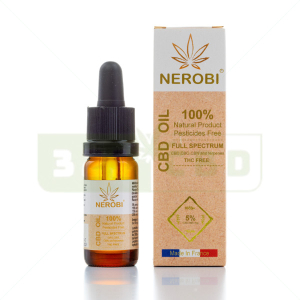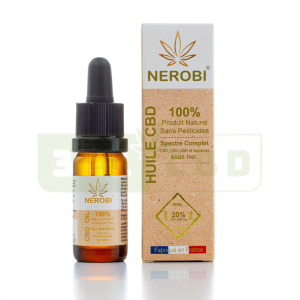What is osteoarthritis? What are the symptoms? How is it treated? In this article, you will discover everything you need to know about osteoarthritis. We will also mention some studies that consider CBD as a real alternative to treatments against osteoarthritis.
Osteoarthritis: What is it?
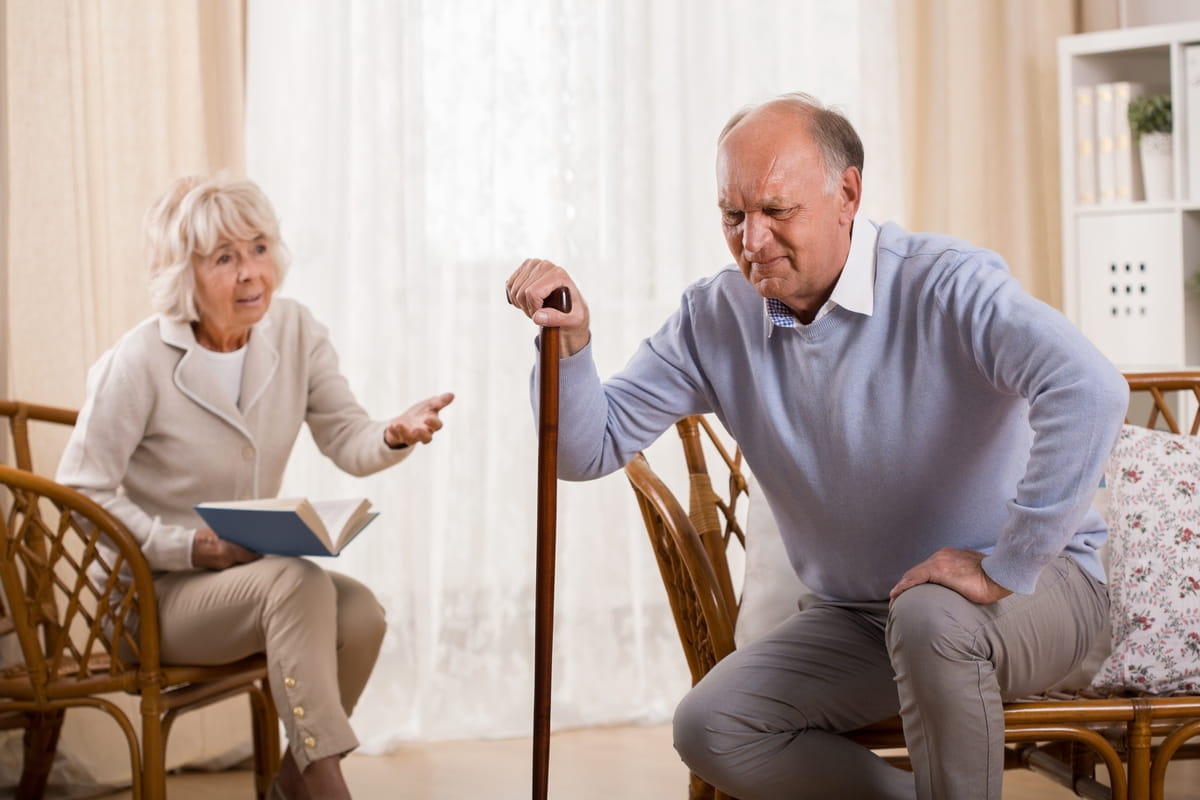
Osteoarthritis is a joint disease that affects almost one in two people over the age of fifty. It is also called "osteoarthritis". It is characterized by a progressive degeneration and destruction of cartilage in the joints.
A patient suffering from osteoarthritis suffers from chronic joint pain during various movements. They also experience functional discomfort.
In general, there are various forms of osteoarthritis: inflammatory forms and non-inflammatory forms. There are also pathologies similar to osteoarthritis such as effusions[2] or synovitis[3].
Osteoarthritis and arthritis: what are the differences?
These two expressions, in spite of their spelling affinity, retain some particularities. Although they are all related to joint pathologies, they differ in their causes, the nature of the pain, the local and biological signs, and their treatment.
With regard to the cause, it must be recognised that arthritis has infectious, immune and metabolic causes. As for arthrosis, its causes are determined by factors such as anatomical anomalies, overweight or trauma.
Similarly, we also note that the pain is inflammatory in arthritis, and intensifies during the night. This is quite the opposite of osteoarthritis, where the mechanical pain is triggered by the stress on the affected joint. This pain decreases as soon as the patient leaves the joint at rest.
Moreover, as far as local signs are concerned, it is important to know that in the case of arthritis, the deformation of the joint leaves a sensation of "heat", which is only the consequence of the inflammatory signs. In the case of osteoarthritis, the deformation of the joint is rather cold, since it is not accompanied by inflammation.
All these distinctions allow us to conclude that, as far as treatment is concerned, we will only attack the cause. In the case of arthritis, it is a question of treating the cause. This involves antibiotics for infections or biotherapies for immune disorders. In cases of osteoarthritis, it is therefore the risk factors that must be treated.
Mechanisms of osteoarthritis
Each joint is in fact equipped with cartilage. This cartilage lines the bony ends of every joint. It is this arrangement that allows it to facilitate movement, by making each joint slide over the other. Osteoarthritis occurs through the destruction of this cartilage.
Progressively this destruction extends to all the structures of the joint, whether it is the bone or the synovial tissue. In the course of cartilage destruction, small pieces of cartilage often break off and begin to float in the joint pocket. This triggers mechanical inflammatory outbreaks, which are usually accompanied by an increase in fluid production. There is also swelling of the joint. The patient gradually loses mobility.
Which joints are affected?
No joint is spared from osteoarthritis. Everything depends on its location. It is this very location that determines the frequency of this disease.
Thus, it has been noted that osteoarthritis of the spine is the most common. It occurs in people aged between 65 and 75 years. Its frequency of occurrence in people of this age is between 70 and 75%.
The second most common location is arthrosis of the fingers. It has a frequency of 60%. However, these consequences are more regrettable than those found in the spine. This osteoarthritis in the fingers can lead to irreversible deformities.
In third place come osteoarthritis of the knee and hip. The frequency of occurrence is respectively 30 to 10% for people aged 65 to 75. At this stage, the handicap is major, because these joints are used to supporting a good part of the body weight.
As we have said, all joints are affected by the risk of osteoarthritis. However, some joints, such as those in the shoulder, elbow, wrist and ankle, are rarely at risk.
Osteoarthritis: Some identified risk factors
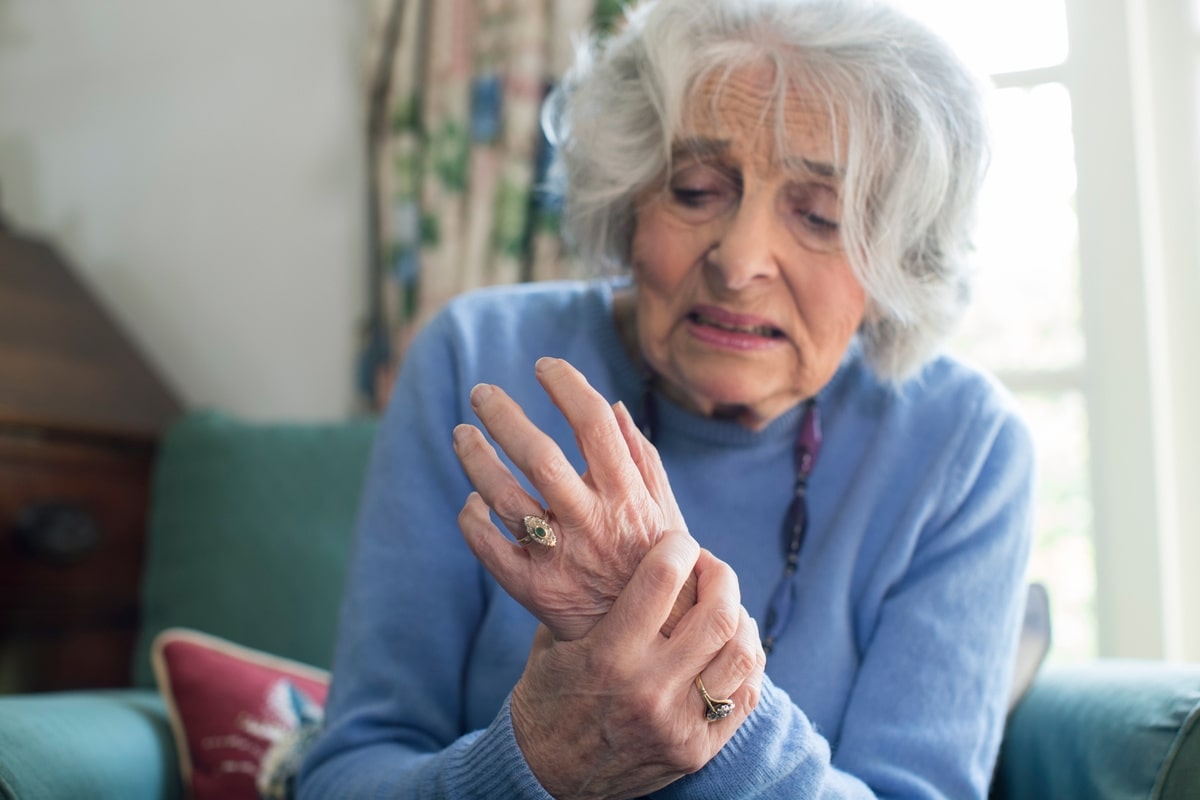
This process of cartilage destruction is linked to several identifiable risk factors such as
- Age
According to certain statistics[4], 3% of people under 45, 65% of people over 65 and 80% of people over 80 are affected by osteoarthritis.
- Metabolic disorders
Its metabolic disorders are favoured by diabetes[5] and obesity[6].
- Excessive pressure
This excess pressure can be the result of being overweight or carrying heavy loads. If you are involved in strenuous physical activity, this can increase the mechanical stress and damage the cartilage structure.
- Joint diseases
A person whose joint is subject to rheumatic diseases such as chondrocalcinosis (calcium deposits in the cartilage), osteonecrosis or rheumatoid arthritis[7], is also at high risk of developing osteoarthritis.
Moreover, the fragility of the cartilage and anatomical anomalies or certain trauma recurrences such as joint fracture, neglected sprain, dislocation or removal of the meniscus, also favour the appearance of osteoarthritis.
- Heredity
Osteoarthritis is considered in certain cases to be a hereditary disease, in the hypotheses of osteoarthritis of the hands, knee or hip. Apart from these cases, the hereditary factor is rather less, or even almost nil. It should also be noted that osteoarthritis affects more women than men.
What are the symptoms of osteoarthritis?
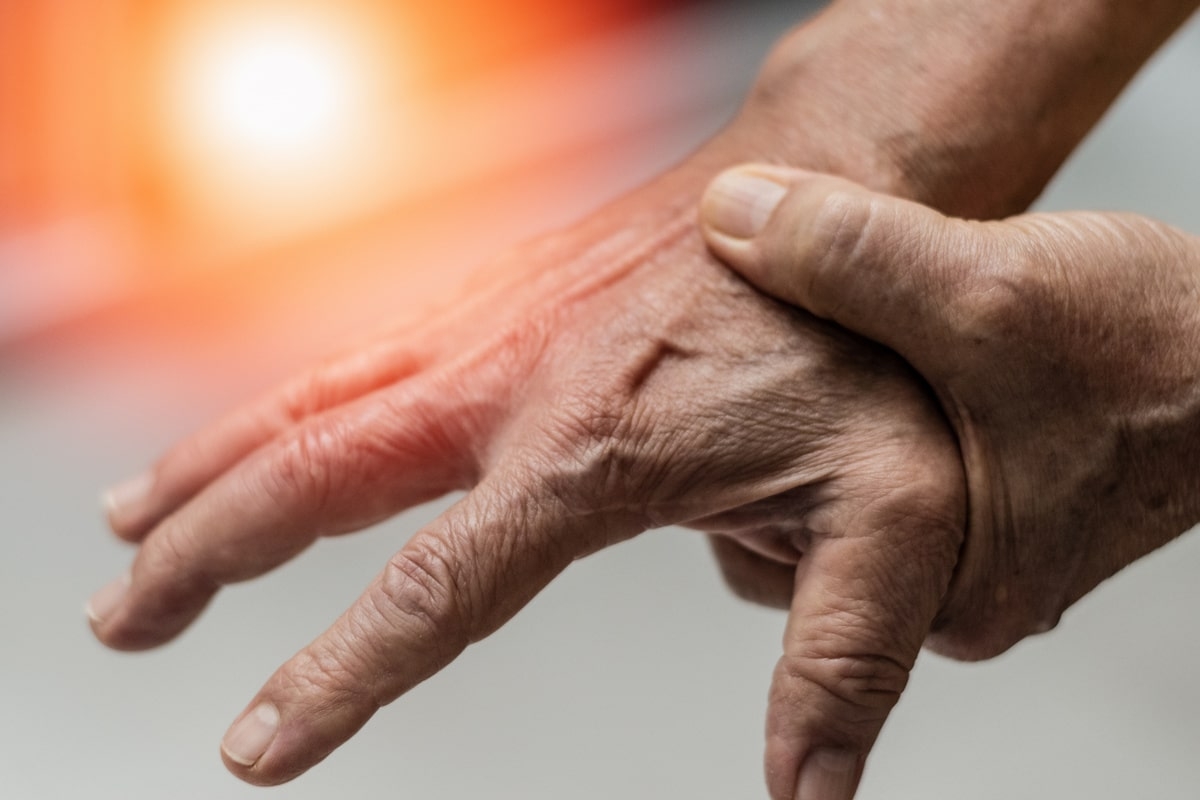
Its symptoms vary according to the joint concerned. But the common symptom is pain, followed by functional discomfort in the joints.
We speak of mechanical pain if it presents the following signs
- Triggered and aggravated by movement or effort generated by walking (hip osteoarthritis), climbing stairs (knee osteoarthritis) or lifting the arm (shoulder osteoarthritis).
- Decreased or reduced pain when the joint is at rest
- Pain is minimal in the morning and maximal in the evening
- Waking up at night because of pain
As for functional discomfort, it translates into a limitation of mobility of the joint affected by osteoarthritis. This limitation varies according to the patient's hyperactivity.
It should be noted, however, that osteoarthritis joints are neither red nor hot. But when an effusion of liquid called "synovium" occurs, they can swell, as is observed in the knee. There is also a high risk of deformity of the joints. The most common cases are in the hands and knees.
How is osteoarthritis diagnosed?
The diagnosis of osteoarthritis can only be made clinically or radiologically.
The clinical examination consists of an examination of the painful joints, combined with self-evaluation questionnaires.
The radiological examination involves a standard X-ray. This is largely sufficient for the diagnosis of osteoarthritis. Various signals are checked during this examination, such as pinching of the joint, the presence of bony growths or geodes (holes in the bone around the joint).
Sometimes a joint puncture is also performed if there is a liquid effusion. This is most common in the knee.
However, it is important to know that a blood test does not diagnose osteoarthritis.
What about the treatment of osteoarthritis?
Osteoarthritis: How is it treated?
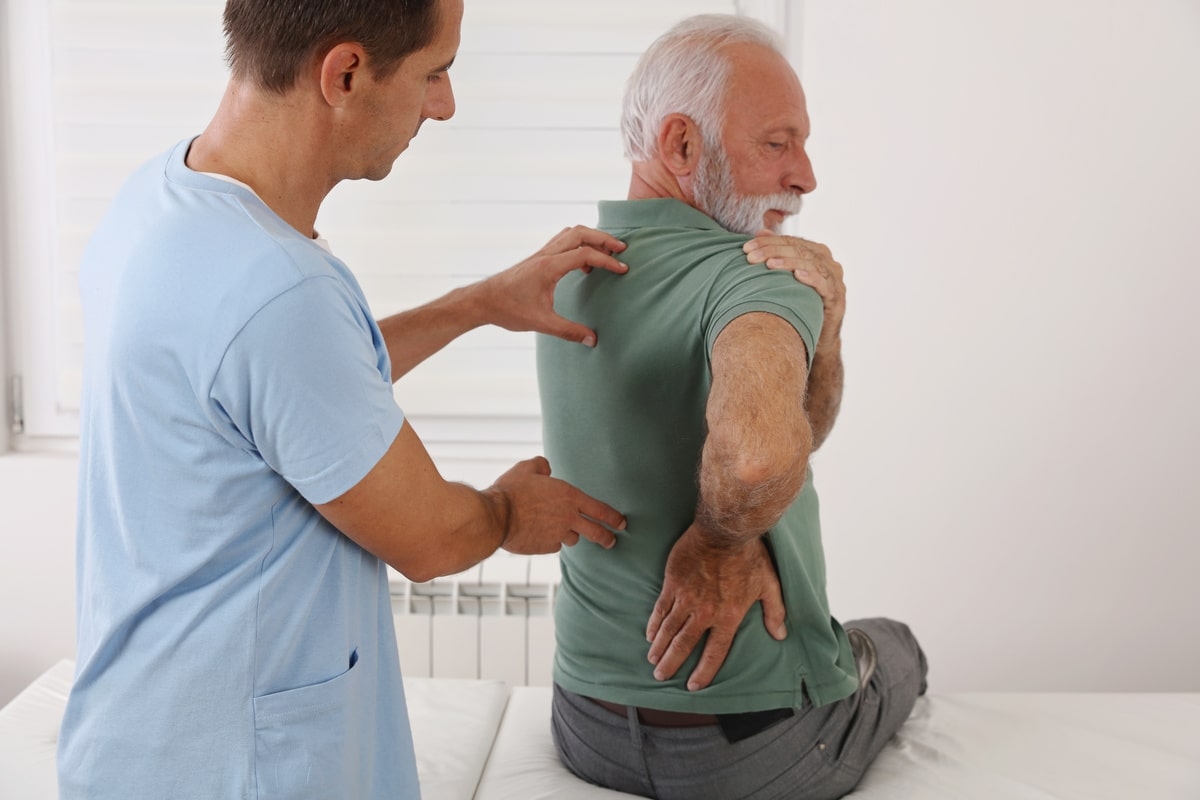
To relieve osteoarthritis patients, there are drug and non-drug treatments.
Medication treatments
The drug treatment of osteoarthritis involves painkillers, anti-inflammatory drugs and infiltrations.
Analgesics
Paracetamol is the most commonly used painkiller. If the expected relief is not forthcoming, other more powerful painkillers are used. However, when powerful analgesics have morphine derivatives (related to sleep), their use should only be exceptional.
Anti-inflammatory drugs
Like analgesics, these drugs do not act on the evolution of the disease, but rather on its symptoms. A distinction is made between traditional non-steroidal anti-inflammatory drugs (NSAIDs) and topical non-steroidal anti-inflammatory drugs.
The former belong to the Ibuprofen family and are administered orally. The latter are anti-inflammatory gels or creams that are applied directly to the painful joint.
Infiltrations in osteoarthritis
In the most serious cases, such as when the patient has difficulty moving and the pain is persistent, despite taking analgesics, corticosteroid injections are sometimes used directly in the affected joint. Hyaluronic acid, a type of gel that lubricates the joint, may also be injected.
Non-drug treatments
There are also many non-drug symptomatic treatments such as pain relief, surgical treatments, joint saving measures and prevention.
Analgesic measures
At the onset of a painful flare-up, the patient can apply "heat" or "cold" to the painful area to relieve pain.
Joint saving and prevention measures
When a joint is subject to the effects of osteoarthritis, certain risk factors can worsen the impact. This is why it is advisable to avoid overworking the joint. An overweight patient suffering from osteoarthritis would therefore benefit from losing a few kilos to protect the affected joint.
Surgical treatments
If medical treatment fails, doctors resort to surgical treatment depending on the location of the osteoarthritis. When the pain is really disabling, such as in the hip and knee, surgical treatment is a real option.
For example, a metal or plastic prosthesis will be placed in these joints. 8] This is called arthroscopy. This surgery will also remove debris from the cartilage and bone in the osteoarthritic joint. Some surgeries result in the fusion or reconstruction of joints.
Rehabilitation management
To counteract the pain and development of osteoarthritis, muscle maintenance with stretching and exercise is also recommended to maintain muscle mobility and stability.
The hope of stem cells
Until recently, osteoarthritis was considered an incurable disease. But since 2012, studies have been carried out to develop techniques or drugs that could cure osteoarthritis.
At the Montpellier University Hospital, for example, a stem cell therapy has been tested on patients[10]. 10] But before that, it was successfully tested on animals. As for the effectiveness of this technique on humans, we must still wait, although the studies are promising.
Treatments for osteoarthritis: What are the side effects?
Treatments for osteoarthritis pain are not curative. Rather, they are intended to reduce or even eliminate the chronicity of the pain experienced by the patient.
However, as many studies have shown, anti-inflammatory drugs, painkillers, analgesics and surgical treatments have real side effects. The potency of some of these drugs even requires a prescription.
For example, traditional non-steroidal anti-inflammatory drugs have potentially serious digestive effects. 11] Some of these anti-inflammatory drugs have been withdrawn from the market due to their serious side effects, such as Rofecoxib, Valdecoxib or Lumiracoxib. Because of the seriousness of these side effects, some anti-inflammatory drugs are sometimes combined with drugs that protect the stomach lining, the effectiveness of which is also not fully guaranteed.
In addition, during treatment with anti-inflammatory drugs, alcohol consumption is also detrimental to the patient's health.
Common side effects range from gastrointestinal discomfort and heartburn to ulcers and severe digestive bleeding. 13] For example, a high dose of acetaminophen can damage the patient's liver.
14] These side effects are also related to infection or immune disorders.
15] With regard to dependence, several studies have been conducted on this subject. The risk of dependence is even greater[16], especially for level 3 painkillers[17].
Faced with the real side effects of these antidepressants, analgesics or anti-inflammatories[18], as attested by many scientific journals, the use of CBD to relieve pain caused by osteoarthritis is beginning to gain ground. Many scientific papers reveal how CBD is an alternative for the pain and inflammation induced by osteoarthritis.
CBD and Osteoarthritis: What does the research say?
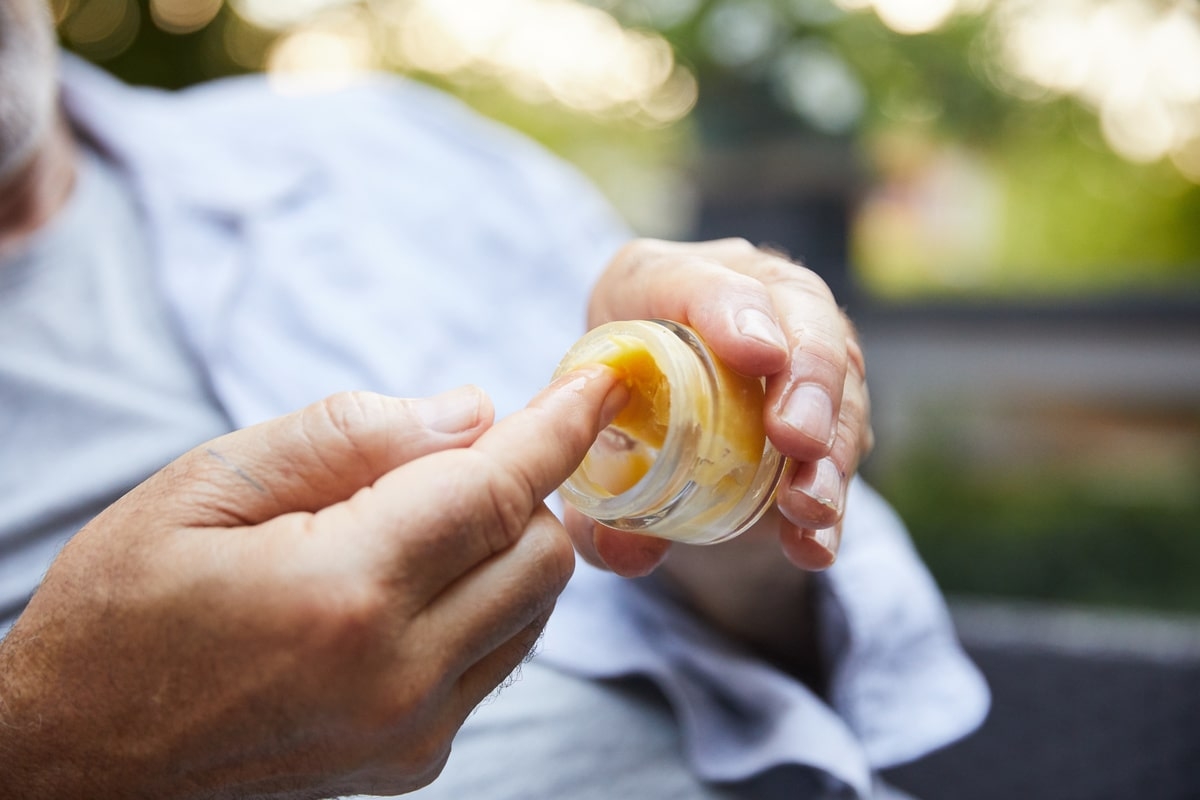
Studies have focused on osteoarthritis, arthritis and bone fractures. The conclusion is that CBD brings real perspectives in the relief of the various chronic pains induced by these diseases[19]. 5 important publications are cited in scientific journals:
- Proceedings of the National Academy of Sciences of the USA, in August 2000.
- Frontiers in Endocrinology, in November 2012.
- PLOS One, in November 2013
- Journal of Bone and mineral research, in March 2015.
- European Journal of Pain, in October 2015.
Other studies have also proven the anti-inflammatory properties of CBD in relieving chronic pain. These include:
- Free Radical Biology and Medicine, in September 2011.
- PLOS One, in 2011.
- Pain and Analgesia, in June 2012.
- Bioorganic & Medicinal Chemistry, in 2015.
- European Journal of Pain, in July 2016.
Also, in 2016, a study[20 ] looked at the anti-inflammatory properties of CBD. This study looked at people with chronic arthritis (a form of osteoarthritis). The local application of CBD on the sore area indeed favoured an attenuation of the inflammation.
Better still, it was found that this application of CBD caused a reduction in the swelling of the joints, the infiltration of immune cells and the thickening of the synovial membrane. To reach such conclusions, this team of researchers actually measured the levels of inflammation with doses of 0.6 to 6.2 mg/day of CBD.
These data indicate that the local application of CBD has therapeutic potential to relieve the discomfort of arthritis pain and inflammation. CBD would therefore act like any antidepressant, analgesic or inflammatory.
In addition, another preclinical study[21] was also carried out by Professor Philpott, an American rheumatologist, to study the effect of CBD on osteoarthritis. The aim was to determine whether CBD could reduce the pain induced by osteoarthritis, and whether CBD's inhibition of inflammation could prevent the development of osteoarthritis pain and joint neuropathy.
This experiment was indeed carried out on rats by intra-articular injection. The study concluded: "The data presented here indicate that local administration of CBD blocked the pain of osteoarthritis. Prophylactic treatment with CBD prevented the further development of pain and nerve damage in these osteoarthritic joints."
While CBD has anti-inflammatory, analgesic, pain-relieving or anti-addictive properties[22], it is different from the usual antidepressants in that it does not induce any side effects. There is no shortage of scientific reviews attesting to the fact that CBD has the property of reversing certain addictive effects. We can quote among other studies :
- Addictive Behaviors, April 2013.
- Substance Abuse: Research and Treatment, in May 2015.
- Neurotherapeutics, in October 2015.
According to the findings of a 2015 study conducted in the United States and published by the National Bureau of Economic Research, "States that have allowed medical cannabis dispensaries see a decline in opioid addictions as well as a decline in overdose deaths, compared to states that have not."
The findings of this study also align with those published in 2014 in the "Journal of the American Medical Association" (JAMA). This study thus reports that the adoption of a law regulating medical cannabis results in a significant decrease in opioid overdose death rates. According to the same study, this decrease is around 24.8% compared to American states that have not legalized cannabis[23].
It is this lack of side effects[24] of CBD that justifies several international institutions and various national legislations considering CBD as a legal product.
For example, in June 2018, the World Health Organization (WHO) Committee deliberated in favour of CBD: "The therapeutic applications of CBD are being researched for various clinical uses. (...) Cannabidiol (CBD) is not specifically listed in the schedules of the United Nations International Drug Control Conventions.
Similarly, the World Anti-Doping Agency (WADA) also downgraded CBD from the doping list in 2018. The European Union also confirmed this through the Court of Justice of the European Union (CJEU), in its ruling in case C-663/18, known as Kanavape, issued on 19 November 2020[25].
To date, there is no cure for osteoarthritis. Conventional medicine recommends analgesics, antidepressants and anti-inflammatories, which unfortunately have side effects. Worse, they also reduce patients to a state of dependence.
This is what justifies the gradual recourse of some patients to CBD, whose analgesic and anti-inflammatory properties have been recognised by several studies and certified by patient testimonies[26]. As far as osteoarthritis is concerned, numerous preclinical studies have been carried out with satisfactory conclusions. However, there are very few solid clinical studies on humans that could lead to the development of a drug.
1] https://www.doctissimo.fr/html/dossiers/rhumatismes/sa_3488_differencier_affections.htm
2] https://www.doctissimo.fr/sante/dictionnaire-medical/epanchement
[3] https://fr.wikipedia.org/wiki/Synovite
[4] https://www.inserm.fr/information-en-sante/dossiers-information/arthrose
[5] https://www.inserm.fr/information-en-sante/dossiers-information/diabete-type-1
[6 ] https://www.inserm.fr/information-en-sante/dossiers-information/obesite
[7 ] https://www.inserm.fr/information-en-sante/dossiers-information/polyarthrite-rhumatoide
[8] https://public.larhumatologie.fr/quand-faire-appel-la-chirurgie
[9 ] https://public.larhumatologie.fr/fiches-dauto-exercice-arthrose
[10 ] https://www.allodocteurs.fr/j-ai-mal/aux-articulations/arthrose/les-solutions-pour-soulager-l-039-arthrose_11741.html
[11]https://www.passeportsante.net/fr/Maux/Problemes/Fiche.aspx?doc=arthrose-pm-traitements-medicaux-de-l-arthrose; https://cbdissimo.com/cbdtheque/post/arthrose.html
[12] https://www.passeportsante.net/fr/Maux/Problemes/Fiche.aspx?doc=arthrose-pm-traitements-medicaux-de-l-arthrose
[13] https://www.doctissimo.fr/html/sante/encyclopedie/sa_785_arthrose.htm
[14] https://www.doctissimo.fr/html/sante/encyclopedie/sa_785_arthrose.htm
[15] https://www.observatoire-sante.fr/cbd-vraiment-efficace-contre-les-douleurs-articulaires/
[16] Guillaume RPCHE, Addiction aux antalgiques opioïdes, Thèse de doctorat e Pharmacie, Université Toulouse II, 2014; https://www.camh.ca/fr/info-sante/index-sur-la-sante-mentale-et-la-dependance/les-antidepresseurs
17] Melle BENSALAH Sarah, L'utilisation des antalgiques et risques de dépendance, Thèse de doctorat en Pharmacie, Université de Lille 2, 2016; https://www.deuxiemeavis.fr/blog/article/258-medicaments-anti-douleurs-quels-sont-les-risques
[18]https://www.canada.ca/fr/sante-canada/services/drogues-medicaments/cannabis/renseignements-medecins/renseignements-destines-professionnels-sante-cannabis-cannabinoides.html#rn872
[19]https://www.canada.ca/fr/sante-canada/services/drogues-medicaments/cannabis/renseignements-medecins/renseignements-destines-professionnels-sante-cannabis-cannabinoides.html#rn871
[20] https://www.ncbi.nlm.nih.gov/pubmed/26517407
[21] https://www.ncbi.nlm.nih.gov/pubmed/28885454
[22] https://cliniquealtermed.com/le-cannabis-medical-un-nouveau-tournant-pour-la-sante-marie-josee-denis-naturopathe/
[23] https://www.norml.fr/sante-prevention-rdr/portail-professionnels-de-sante/etudes-cliniques-et-precliniques/
[24] https://www.rnd.de/politik/furs-kiffen-nach-karlsruhe-richter-halt-verbot-fur-verfassungswidrig-ZO3SVKUJMZEZZF6WL2A3ARABK4.html
[25] https://www.drogues.gouv.fr/actualites/cannabidiol-cbd-point-legislation
[26 ] https://cliniquealtermed.com/le-cannabis-medical-un-nouveau-tournant-pour-la-sante-marie-josee-denis-naturopathe/


